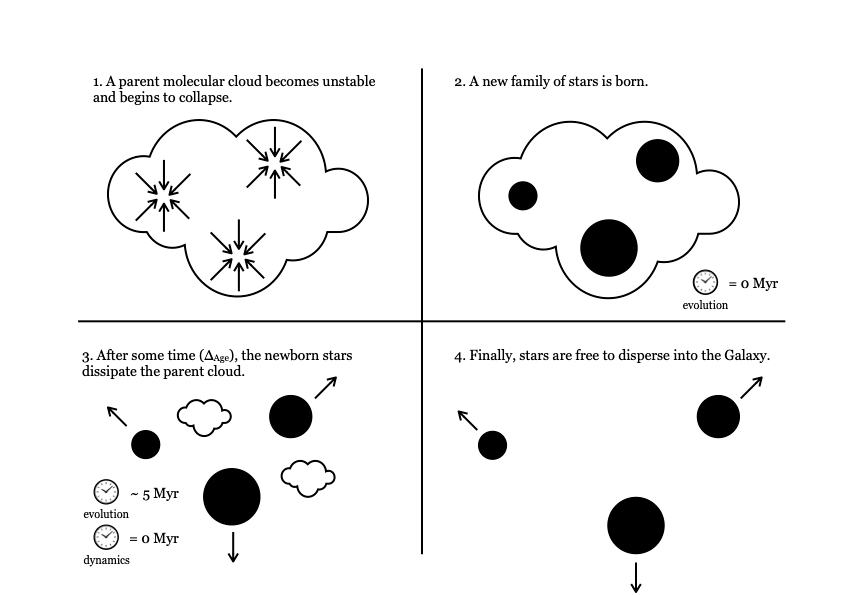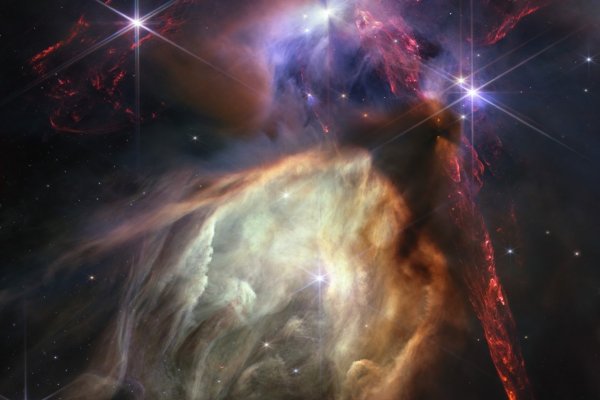A team led by Núria Miret-Roig, researcher from the University of Vienna and collaborator of the Institute of Cosmos Sciences of the University of Barcelona (ICCUB) has discovered an age discrepancy between two of the most reliable methods to measure stellar ages, isochro-nal and dynamical tracebacks. Their results find dynamical traceback ages to be consistently younger by about 5.5 million years. This key finding suggests that the dynamical traceback 'clock' starts when a star cluster begins to expand after it leaves its parental cloud, while the isochronal 'clock' starts ticking from the moment of star formation. This result has significant implications for our understanding of star formation and stellar evolution, including planet formation and the formation of galaxies. With it, existing models can be tested to offer a new perspective on the chronology of star formation. These results will be published in Nature Astronomy.
Stellar ages are a fundamental parameter in astrophysics, however, they are one of the hardest measurements to make. The best estimations are for star clusters, i.e., groups of co-eval stars with a common origin. Numerous techniques are used to estimate stellar ages, but they often show conflicting results. Are the age differences between different techniques caused by un-certainties in models and observations? Or, can we profit from this age puzzle to learn some-thing about the star formation process?

“Astronomers have been using isochronal ages since we understood how stars work, but these ages depend on the particular model we use” said Núria Miret-Roig, the first author of this study and researcher at the University of Vienna. “The high-quality data from the Gaia satel-lite allows us to measure ages dynamically, independently of stellar models, and we were excited to synchronize the clocks, meaning, to test the different models. We found a con-sistent and puzzling difference between the two age methods. We got to the point where we could not blame the discrepancy on observational errors anymore, so the two clocks are most likely measuring two different things.”
“This age difference between the two methods constitutes a new and much needed tool to quantify the earliest stages in a star’s life” says João Alves, co-author and professor at the Uni-versity of Vienna. “It allows us to measure how long baby stars take before leaving their nest”.
Such a constraint is pivotal in advancing our comprehension of the early life of stars and the evolution of stellar clusters. The researchers analyzed six nearby (<150 pc), young (<50 Myr) clusters and showed that the timescale of the embedded phase is 5.5±1.1 Myr, and could de-pend on the cluster mass and amount of stellar feedback. The application of this new tech-nique to other young clusters in the solar neighborhood, where the observational precisions are best, will provide new insights into the star formation and dispersal process.
David Barrado, CAB researcher, qualifies: "Determining the ages of any cosmic process is a fundamental problem. This work lays a very firm foundation for the search for global solu-tions. The PLATO satellite, which will be launched at the end of 2026, will be the key to a complete resolution.
This work has been possible thanks to the excellent astrometry of the Gaia special mission combined with ground-based radial velocities (such as the ones from the APOGEE cata-logue), which allow the precisions in the 3D velocities to trace the positions of stars back in time to their birth site. New and coming spectroscopic surveys such as WEAVE, 4MOST, and SDSS-V will make this study possible for the entire solar neighborhood.
As Miret-Roig puts it, "Our work paves the way for future research in star formation, offer-ing a clearer picture of how stars and clusters evolve. It's a significant step in our quest to understand the formation of the Milky Way and other galaxies."
Paper: Núria Miret-Roig, João Alves, David Barrado, Andreas Burkert, Sebastian Ratzenböck & Ralf Konietzka, Insights into star formation and dispersal from the synchroni-sation of stellar clocks, Nature Astronomy (2023)
Reference and doi: Nature Astronomy (2023). DOI: 10.1038/s41550-023-02132-4
Contact:
First author: Núria Miret Roig, nuria.miret.roig@univie.ac.at
CAB researcher: David Barrado, barrado@cab.inta-csic.es
ACKNOWLEDGEMENTS
Co-funded by the European Union (ERC, ISM-FLOW, 101055318, PI: J. Alves). Views and opinions expressed are, however, those of the author(s) only and do not necessarily reflect those of the European Union or the European Research Council. Neither the European Union nor the granting authority can be held re-sponsible for them.
Proyecto PID2019-107061GB-C61 y No. MDM-2017-0737 financiado por MCIN/ AEI /10.13039/501100011033/ y por FEDER Una manera de hacer Eu-ropa



